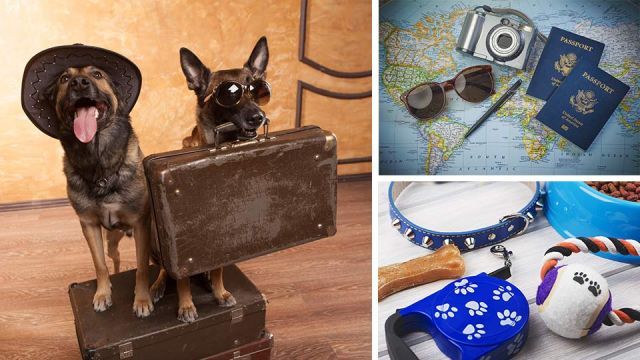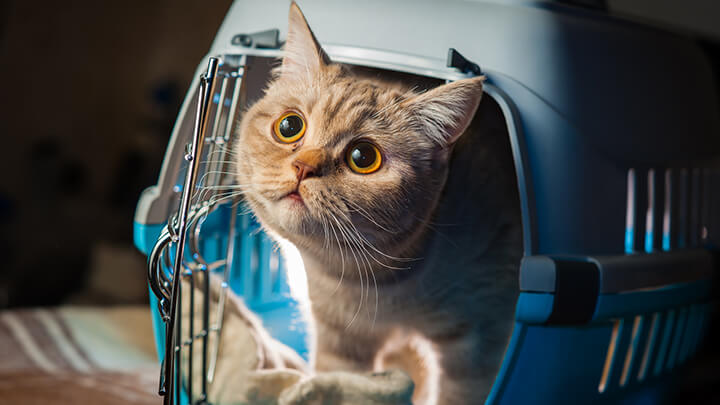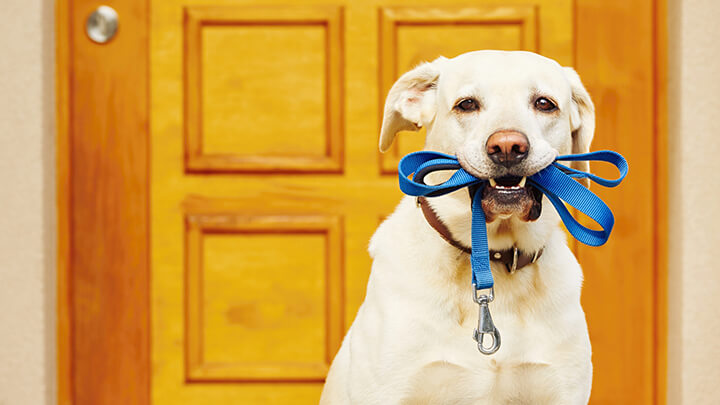
Travel is always better with a friend, and there’s no better companion than your pet. Unfortunately, travel as an institution isn’t always tolerant of pets. Border crossings can be tough, and hotels aren’t always eager to allow animals. However, there’s no need to despair. Travel with your pet is not only possible, but can be a great experience. Just follow a few simple rules, and you’ll have no problems.
1. Check your destination country’s pet travel requirements
As any traveler knows, every country has its own entry requirements for visitors, and the same applies for pets. Some countries are pretty easy going, while others require long quarantine periods for any animals being moved across their borders. So, before even booking your trip, you must find out what the deal is with your destination country.
The easiest way to do this is by taking a look at pettravel.com’s exhaustive list of country-specific live animal regulations. However, it’s worth remembering that although pettravel.com is generally pretty up-to-date, it’s not an official source of information. So, make sure you double check travel requirements if you can. Some countries like the U.K. provide this information online, or you can just contact your destination’s embassy directly. Whichever route you go, make sure you’re aware of any regulations well ahead of time.
2. Find an airline that’s cool with pets

When it comes to handling pets, not all airlines are created equal. Some are great, some not so great. For example, Virgin Atlantic falls into the great category, thanks to its pet frequent flyer scheme. Most major airlines list their pet travel conditions on their websites. United’s policy can be found here, Delta’s is here, and American Airlines’ is here. If you can’t find your airline’s policy, pettravel.com’s database is a useful tool, though always try to confirm everything directly with the airline.
To avoid any mishaps, always remember to tell the airline you’re bringing a pet before booking, and remind them after booking. Give them everything they could conceivably need to know about your pet, including their breed and size. These details matter! For example, many airlines are finicky about short-nosed dog breeds like pugs, which can suffer breathing problems in the cabin.
Likewise, while smaller pets can usually fly on your lap, larger animals often need to travel in the cargo hold. If this is the case for your pet, then don’t forget to pack food and water on top of the carrier, and label the carrier itself with warnings for luggage handlers (plus a big “this side up” sticker). Moreover, flying with a pet can be expensive, so make sure you know what kind of additional charges you might be up for. Of course, if cost isn’t a factor for you, then why not go the whole hog and have a look at Petairways?
3. Practice makes perfect
If your pet needs to fly as checked luggage, you’re going to need to practice subjecting them to long bouts in the carrier. This is extremely important for two reasons: stress management and pee. If your pet’s first carrier experience is a 14-hour trans-Atlantic flight, then on arrival you can expect to receive a terrified fur-ball dripping with pee, which isn’t good for anyone involved (especially the now-traumatized pet).
Instead, build your pet up beforehand, with incrementally longer practice stints in the carrier at home, spread over a few weeks before flying. This will teach your pet bladder management, and make him or her more comfortable with the dreaded carrier. It’s an unpleasant process, but it pays off in the long run. For more details and tips on how to make this process easier, the video below can be considered mandatory viewing material.
4. Decide whether or not you want to medicate your buddy
However you travel, you’re going to have to make a tough choice at some point: should you knock your pet out for the flight, or not? This is a more difficult issue than it might initially seem. For one, tranquilizers are often discouraged by veterinarians, who warn they can cause breathing issues. Benedryl can be a gentler choice for some pets, though realistically you’re going to need to ask a reliable vet what option is best for your specific pet.
5. Figure out where to stay

Your next major issue is finding accommodation that loves pets as much as you do. If you’re doing your trip on the cheap, hostels are a mixed bag, ranging from totally apathetic to staunchly anti-pet. Couchsurfing, Airbnb and their ilk all share the same golden rule: assume nothing, and ask every conceivable question before confirming. Finally, anyone intending on staying in a hotel should use bringfido.com’s global database of pet-friendly hotels as a starting point. Of course, always double check everything with the hotel itself before booking.
6. Pack familiar items
Now that the red tape is mostly out of the way, it’s time to talk about what to pack. Packing for a pet is a lot like packing for a small child. You’re going to want plenty of things to make them feel at home and comfortable. Pick a few of their favorite toys, along with familiar food. Likewise, you may want to bring a few items from their bedding, such as a blanket. Pack this with their carrier. Depending on your pet’s temperament, anything that puts them at ease can be worth its weight in gold.
7. Bring accessories
There’s an endless array of pet travel accessories on the market, most of which really aren’t necessary for most animals. Having said that, you may want to consider a cooling/warming vest if your pet is traveling to an unfamiliar climate. Some other popular travel gadgets include collapsible water bowls, pet gear bags, electronic trackers and pet first aid kits. If you’re planning on doing a lot of walking with a dog, consider investing in a puppy backpack so they can literally pull their own weight. A fairly comprehensible list of popular pet travel items can be found here.
8. Include pet-friendly activities in your itinerary

Amid the red tape, vaccinations, packing and shopping, it can be easy to forget the most important thing about travel: make sure everyone is having a good time, including your pet. Therefore, you should include some free time in your itinerary for your pet’s favorite activities. This might include putting aside a day for playing at a park, or making sure you include time for a morning walk each day. Whatever keeps your pet sane at home is just as important on the road, and there’s no point taking your pet traveling if they aren’t going to enjoy it.
9. Think twice
This brings us to our last important point: make sure to think twice about bringing your pet with you. Putting aside the additional challenges of traveling with a pet, there’s the simple fact that not all animals love the road. Some do, and thrive with adventure. However, just like people, some pets just aren’t cut out for the road, and would rather stay at home.
So before making the plunge, ask yourself: is your pet prepared to travel? If not, then you might want to consider a pet-sitter. If you’re unsure, try taking them on a few short practice trips (such as weekend trips) before committing to a longer travel experience. Finally, if your pet does seem to handle travel well, then you’re in luck. Travel with a pet can be a wonderful experience, for both you and your animal.
Have you got any good pet travel tips up your sleeve? Tell us in the comments below.
— Ryan Mallett-Outtrim

